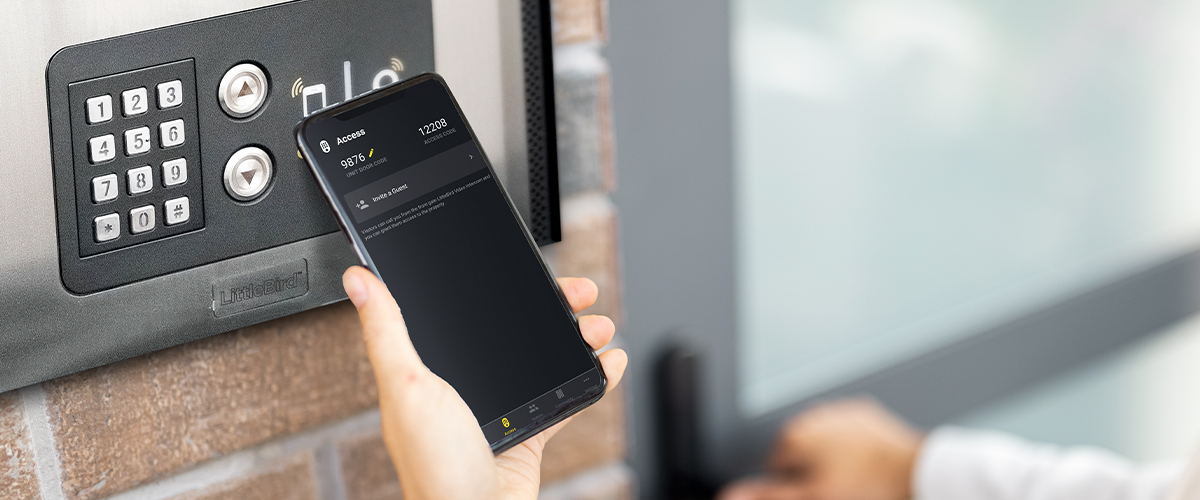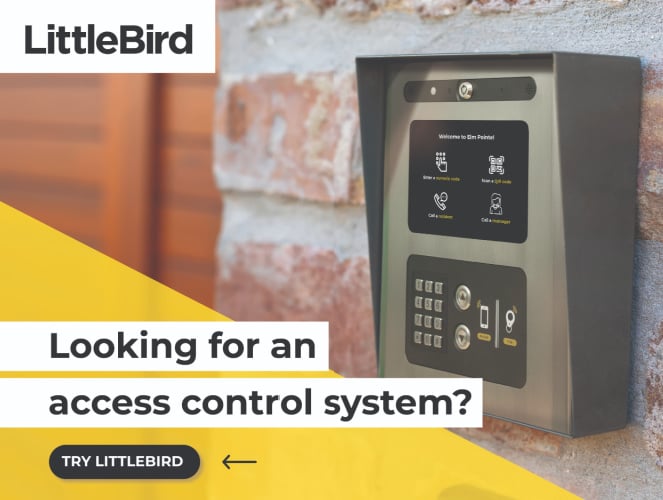The 4 Main Access Control Models: What They Are & How They Work
Whether you manage a multifamily community or a top-secret organization, controlling access to your property is essential to create a safe and secure environment.
Different access control system models work better than others depending on your property's purpose.
In this article, we'll go over what exactly control access is, the four main types of access control models, and examples of each model so you can make an informed decision on which is best for you.
This post covers:
- What is access control?
- Why is access control important?
- What are access control models?
- What are the 4 main access control models?
- Which is the best access control model?
What is access control?
Access control is the management of your building's security by controlling who has access to your property and when. Some access control methods you may be familiar with include locked doors, security gates, and facial recognition. The purpose of access control is to only allow a specific individual access to what is necessary and nothing more.

Why is access control important?
Access control's primary goal is to provide safety to individuals and protect valuable information and has been since the dawn of time. In fact, the implementation of access control can be traced back to ancient Egyptian civilizations and their use of sliding stones, secret entrances, and complex tunnel navigation.
Physical access control systems have since evolved — models that are beneficial to physical properties and models that involve software to control access privileges to digital files.
It can get confusing since the models between these two categories share similarities; however, it's important to note they aren't the same and operate differently.
In this post, we will focus on physical access control models that use a combination of technology and electronic hardware to manage access points on a property.
What are the 4 main access control models?
There isn't a "one size fits all" access control system since each property is unique in its purpose. Instead, there are a handful of models that vary in security strictness. Some models are more intense and better suited for commercial properties that need to comply with security policies and standards. Others have more flexibility and are a better fit for properties that have a higher volume of visitors.
The most common models that you will see on properties are as follows:
- Discretionary access control (DAC)
- Mandatory access control (MAC)
- Role-based access control (RBAC)
- Rule-based access control (RuBAC)
Discretionary access control (DAC)
The discretionary access control (DAC) model is the least restrictive model that allows multiple administrators to have complete control to set security level settings for all users.
The DAC's shared ownership to grant access is especially convenient for residential properties and businesses that have several managers. However, it also has the most risk of user error making it the least recommended model for commercial buildings.
Mandatory access control (MAC)
Mandatory access control is the strictest model by only having one owner assigning credentials. The end-user has no control over any settings that would provide privileges to another user. This is used by businesses that require robust security to maintain the confidentiality of their personal and digital property.
Role-based access control (RBAC)
Within the MAC paradigm, RBAC typically only has one system administrator that assigns every user a specific role that has unique access permissions.
Here's an example:
Sam is a new resident.
Unlike the DAC model, the system administrator doesn't have to manually assign permission to each specific door or entry point to Sam's profile. Instead, the admin assigns Sam the predesigned role of "resident" to give him credentials to all appropriate areas that every other resident enjoys. Admin can also revoke Sam's access privileges by removing the resident role if he were to move.
Role-based access control provides a happy medium of security and simplicity for both residential and commercial properties.
Rule-based access control (RuBAC)
Rule-based access control allows the system administrator to dynamically assign roles to users based on criteria like time of day or day of the week.
Here are some examples of RuBAC:
- A shared library that is only accessible to certain residents after normal business hours.
- A manager with unique permissions that allow her to access a building after hours when others can't.
The RuBAC model is useful for properties that need to comply with local laws to restrict access to areas like pools; however, it can be a tricky model to program depending on how many rooms need time or day-based requirements.
Which is the best access control model?
The "right" access control model varies from property to property depending on compliance standards, ease of use, and accessibility needed for its users.
Role-based access control systems, like LittleBird, are often the best choice for both residential properties and commercial. Whether you are a property manager, employee, or guest, RBAC models are highly secure for all while still being easily managed.
🔐 Looking for an apartment control system? Click here to discover what apartment access control is, how it works, and why it's so important for your multifamily community.
In summary...
- Access control systems manage who has access to a property and when.
- There are four main access control models including discretionary access control (DAC), mandatory access control (MAC), role-based access control (RBAC), and rule-based access control (RuBAC).
- Each model differs in strictness of security and how they grant credentials to users.
- The role-based access control model is typically the best option for both residential and commercial properties.
-1.png?width=5935&height=1114&name=NEW%20LU%20%E2%80%93%20Long%20Logo%20%E2%80%93%20Dark%20(1)-1.png)

Comments